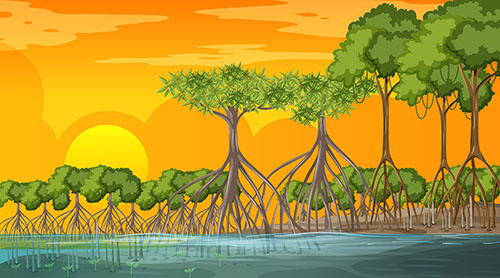Every year, tens of thousands of whales make an annual migration from their feeding grounds in the Antarctic, to breeding grounds in the warmer, protected waters of the Great Barrier Reef. The destination is so good, the Great Barrier Reef Marine Authority says around 30 species of whale and dolphin can be found within the 2000km long coral habitat. The most well known species include humpback and dwarf minke whales, but killer whales, sperm whales and short-finned pilot whales have also been observed.
Humpback Whales
Once hunted almost to extinction, humpback whales have made a stunning recovery since whaling for the species was banned in Australia in 1963. Around that time it was estimated only 500 remained from a pre-whaling population of around 40,000 in east-coast waters.
Today, humpback whales watching on the Great Barrier Reef couldn’t be better. Thousands make the trip all the way north, as far as Cape York and the Torres Straight to socialise and breed. The first whales will begin to arrive around June or July, while pregnant mothers turn up later to give birth and begin the trip south again. Over their lifetime, the whales may make this 10,000 round trip 50 times, covering half-a-million kilometres in their lifetime.

Keen to explore the Great Barrier Reef like a local. Get the guide to TNQ that’s written by locals for travellers who aren’t ‘tourists’
Dwarf Minke Whales
Much less is known about dwarf minke whales than the more common humpback, but like the larger relatives, they are a baleen whale that feeds on krill and they make an annual migration from antarctic waters to the northern part of the Great Barrier Reef and usually congregate around Ribbon Reefs near Port Douglas. Dwarf minke whales grow to around 8-metres, 6000kg and have been recorded swimming at up to 20-knots alongside boats.
Tropical North Queensland is the only place in the world where their migration has been reliably recorded. It’s also the only place people can actually swim with the mysterious mammals. A small number of charter companies will take you out known congregation sites, where these highly acrobatic whales (they can jump out of the water like dolphins!), happily play alongside swimmers.

Tourism & Events Queensland 
Credit – Tourism & Events Queensland 
Credit – Tourism & Events Queensland
Dolphins
You can be sure of one thing – if you get out on the water in Tropical North Queensland, you’ll see dolphins. Most of the marine mammals you’ll spot around the reef are dolphins, including bottle-nose dolphins, Indo-Pacific humpback dolphins, Australian snubfin dolphins, spinner dolphins, pan-tropical spotted dolphins, false killer whales, killer whales (which are the largest of all the dolphins). Often they’ll pass in huge pods or playfully swim alongside boats and ferries heading out to dive sites on the reef.

Dugongs
Although dugongs can found in tropical waters all over the world, Australian waters, and specifically the Great Barrier Reef are some of their most significant feeding grounds. More dugongs live in Australian tropical waters than anywhere else.
Dugongs feed exclusively on sea grass, so are often found in areas where sea-grass meadows are extensive. Individuals can grow to around 6-metres long and weigh as much as 400kg. Interestingly, though, they are more closely related to elephants than they are dolphins or whales. They’re commonly sighted in the sea grass meadow’s around Green Island (read more about what else to do on Green Island in 100 Things To See In Tropical North Queensland).





